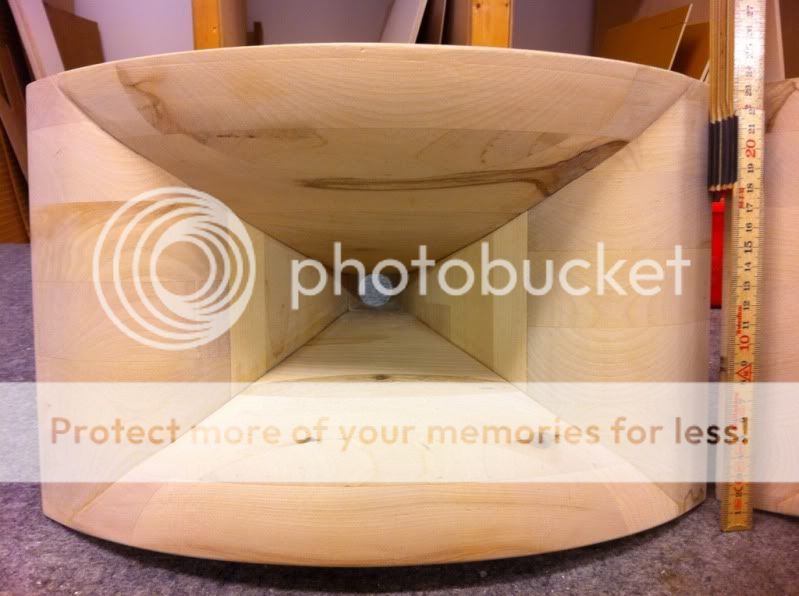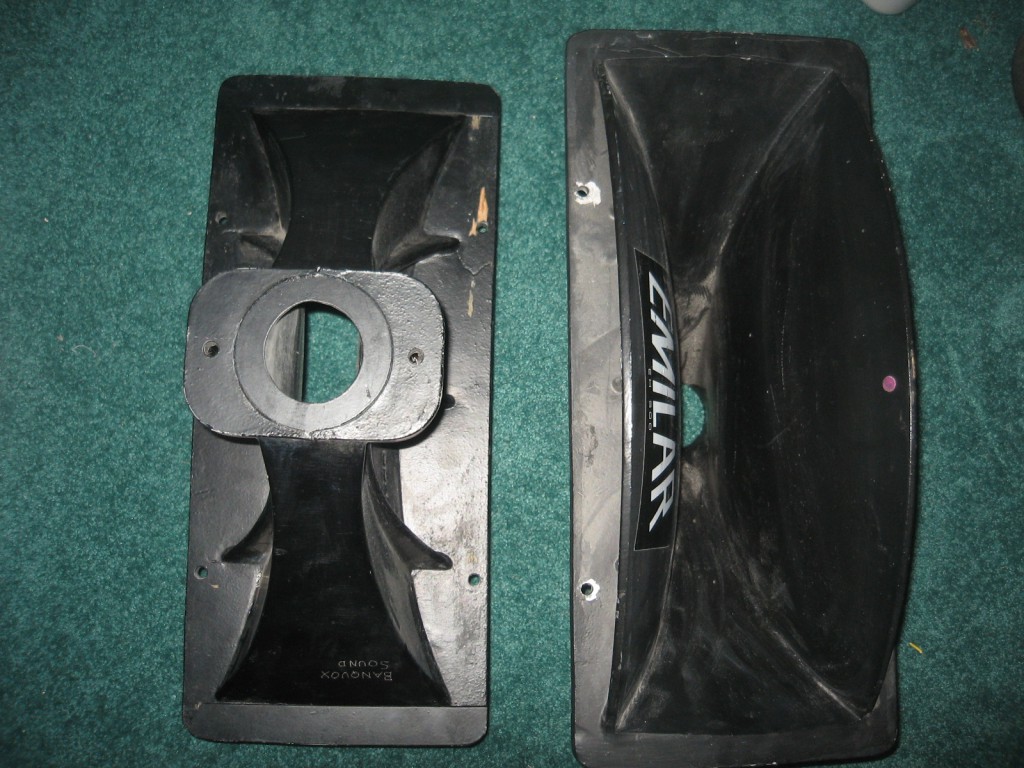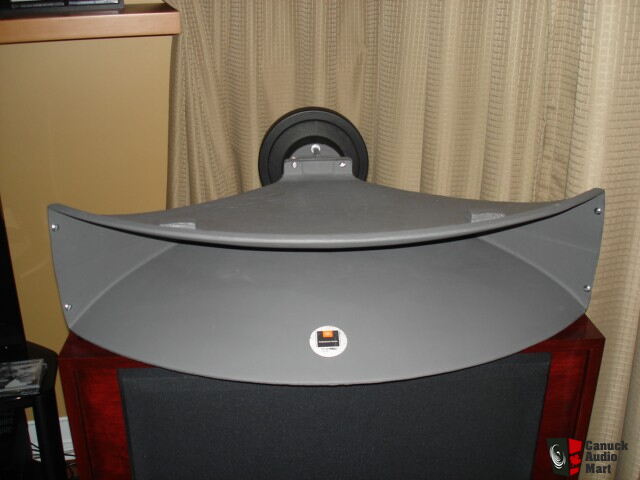Greetings Dr.db -
Instead if describing the differences, I'll link the article, including the article for the DHS tweeter. As you can see, out side of the approximate width dimension, the Bob Smith horn is much different than the 2397, also that it was designed for a small format driver. The drawing indicates six separate exponential cells, vs. the short tapered dividers on the 2397. Calculations will reveal that the only part of the 2397 that resembles the Smith horn is approximately nine inches from the throat, the rest was added by Bart Locanthi. You'll also note, that the divider arrangement on the TAD horn follows that of the 2397, only much shorter. My guess is that the first section of the TAD horn approximates the DHS tweeter with a radial exponential manifold section in front of it.
The Smith DHS is just that, six separate sound sources distributed across an arc. If you pass from one side to the other with information put through it, you can hear each individual cell which function as a point source. The main reason I like the Smith horn, is that with his simple calculations a larger version can be designed to accommodate a 1.4" or 2 " driver.
As for the "Edgar" horn? To be blunt. I have heard the round Edgar horn in a few different listening environments, and I stick to my opinion. Round Tractrix horns sound awful, especially with a two inch driver. You may as well be listening to a Hartsfield horn without the lens. The Tractrix horns that I build were for John Tucker of Exemplar Audio back in 2003 and 2004, of which were his design in collaboration with Jeff Marquardt. That horn was used in conjunction with his Tractrix bass horns. The high frequency driver was the GPA 909-8A, and the woofer was the GPA 515-8G. That combination along with the crossover John and Jeff designed made for an awesome sounding system. I haven't heard the Soniphase horn. That chap lives about 20 minutes from me, although we have never met.
Here ya go. Although I used better material, I chose to remain faithful to Bob Smith's plans. I built the horns out of 6mm Baltic birch, and poplar. For the throat transition I was given two throat transitions for the 604 Mantaray horn by Bill Hanuschack at GPA. I cut the back piece down to about an inch square. The horn really needs a proper adapter in my opinion, perhaps a 3/4" thick circular to square transition. I wouldn't think of asking Bill to provide any more back plates, as he would be left with unusable horns.
It really boils down to individual taste. Some people like diffraction horns, and some don't.
http://www.audioheritage.org/vbulletin/showthread.php?27413-Smith-Horn-Article
http://www.audioheritage.org/vbullet...lsted-Tweeters
The Exemplar system I built:
http://www.jenalabs.com/images/vsac2008-12-r.png
Good luck,
H.F.




 Reply With Quote
Reply With Quote








